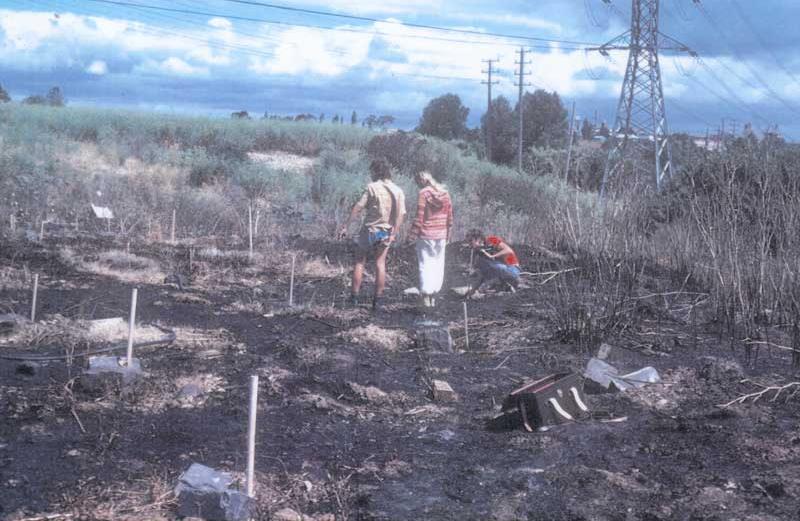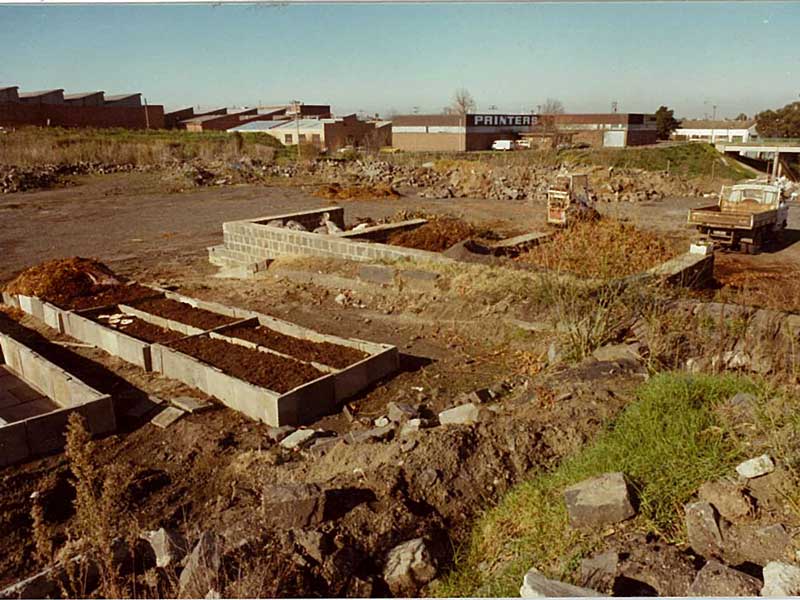
Do something useful
1982 and Brunswick is a dying suburb; everywhere people are being laid off from the shoe and clothing factories that are moving to China.
Sitting along the Merri Creek, which in these days is not much more than a sewer, is a ten acre former rubbish tip overgrown with wild fennel and boxthorn and home to piles and piles of concrete pavers and bluestones.
No one wants this suburb, this creek, these discarded workers or this ten acre wasteland.
That is until a fringe group of teachers, alternative technologists, community workers and urban farmers asks the local council if they can have the land.
A ten year lease is granted on the provision the group “do something useful”. If they don’t they’re told the ten acres will be taken back.
The group cobbles together under the name of CERES and hires former factory workers to help them turn piles of bluestone into garden beds and run the country’s first kerbside recycling service collecting paper, cardboard, bottles and cans.
A corner of the land is turned into veggie garden plots. Some of the workers build a bocce court and come to play and garden on weekends.
The alternative technologists bring back a house slated for demolition and retrofit it with newly available solar panels, insulation, double glazing, food gardens and water tanks (illegal at the time). They open it up and show people how to save energy and water in their own homes.
Teachers struggling to engage their students in classrooms bring them to do hands-on lessons growing food, generating energy, recycling paper and surveying wildlife.
Volunteer city farmers fence off paddocks and bring chickens, goats, even a large pig. They propagate seedlings and start planting natives, veggies and fruit trees.
Groups form to fix bikes, swap produce, keep chooks, trade alternate currency, dance together, sweat together and pray together.
Experimental wind turbines appear and a local energy company installs Australia’s first solar farm.
Small social enterprises spring up to support the growing organisation; they sell plants, coffee and run workshops on everything from mosaics to making cheese.
The group spreads beyond the ten acres and works with others groups to clean up and plant out the overgrown dumping ground that was the Merri Creek before the bike path came.
Outside people are interested in what’s happening at CERES and come to learn how to start CERESes in their own communities.
More and more teachers bring more and more kids to learn. In later years these education programs will be mainstreamed into schools around the country.
In 1992 Brunswick Council judges CERES to have succeeded in doing something useful with the ten acres and approves a second ten years.
The group continues to work and though no one quite understands how CERES and all its myriad parts holds together, somehow it not only persists it becomes ever more diverse.
As each year passes one thing does become clearer; CERES’ superpower is helping people open their hearts to see possibility in each other and the Earth.
Have a great week
Chris

